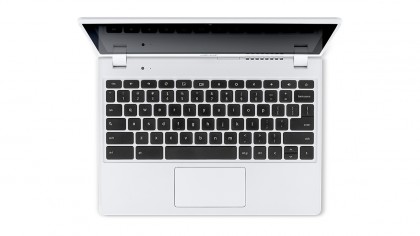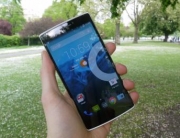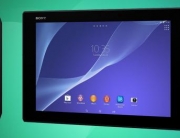
Introduction and Specifications
Since their introduction several years ago, Chromebooks have redefined our understanding of affordable laptops. They’re the new netbooks, using Google’s operating system based on its Chrome browser, are pared down to the bare necessities – low-power processors, low-resolution screens and a minimum amount of memory and storage. By stripping the laptops of extraneous features, manufacturers can keep their price down to $250 or less.
As a result, however, many Chromebooks seem almost indistinguishable from one another. Because they lack defining features and are so affordable, it can be difficult to choose one Chromebook over another.
Acer aims to change that with the C720P Chromebook. This 11-inch laptop sports a fast Intel Celeron processor, a comfortable keyboard and impressive battery life, all wrapped in an attractive and lightweight chassis. But the C720P’s standout feature is its touchscreen – in fact, it’s one of the few Chromebooks to use a touch panel. Of course, that begs the question: Is touch control on Chrome worth spending an extra $100?

Same lightweight design and port selection
With the C720P, Acer hasn’t substantively updated the design of its lauded, $200 C720 Chromebook. Like its predecessor, the C720P still features a slim, all-plastic design that feels surprisingly sturdy and light. My review unit sported Acer’s Moonstone White finish that proved resistant to smudges – Acer also offers the C720P in a Granite Gray, too. Unsurprisingly, the C720P isn’t particularly flashy. Small Acer and Chrome logos on the left side of the lid are the only adornments on an otherwise plain shell.
One noticeable difference is the weight of this machine. Where the C720 clocks in at a respectable 2.76 pounds, the C720P weighs 2.97 pounds. Both machines are substantially beefier than the HP Chromebook 11 and Asus X102BA (a budget Windows 8 laptop), which weigh 2.29 pounds and 2.4 pounds, respectively. Nevertheless, the C720P isn’t much heavier than even the slimmest Ultrabook. When I carried the Chromebook and its tiny power adapter around Manhattan in my bag, I barely noticed the weight.
The port selection remains the same here: HDMI, one USB 3.0 port and a headphone/mic jack on the left side of the machine, and one USB 2.0 port and SD card reader on the right. USB peripherals will work correctly as long as they don’t require software installation. When I plugged in a WD My Passport external drive, for instance, I could browse the files almost instantly, but Windows-specific features, like WD Drive Utilities, can’t run on Google’s OS.

Plenty of power under the hood
Like its predecessor, the C720P houses a dual-core, 1.4GHz Intel Celeron 2955U processor with a 2MB cache, 2GB of DDR3 RAM, and Intel HD Graphics with 128MB of RAM. That’s plenty of power for a notebook that’s designed solely to browse the web. Acer also upped the storage capacity from a 16GB solid-state drive to a 32GB SSD. While this might not sound like a major improvement, you’ll be glad to have the extra storage when you download apps or work on documents offline.
HP’s Chromebook 11 packs a weaker dual-core Exynos ARM processor, 2GB of RAM and 16GB of flash storage (though, in truth, that machine performed smoothly during everyday use). The X102BA uses a 1GHz AMD Temash APU, 4GB of RAM and a slower 500GB mechanical hard drive – an understandable cost-saving choice given Windows’ reliance on local storage.
With only a 32GB SSD on the C720P, you’ll rely heavily on online storage and services. Thankfully, Google provides 100GB of free Google Drive cloud storage with the purchase of the C720P, as well as a 30-day trial of Google Play Music All Access (Google’s answer to Spotify). You can store anything in Google Drive, though you can only create documents, presentations, spreadsheets, forms or drawings.
There’s just one drawback: While you can edit Microsoft Office files after they’ve been converted into Google Drive format, some features such as comments and tracked changes in programs like Word don’t appear in the Drive version. This limitation will prove frustrating if your classmates or colleagues frequently use Word or Excel.
Performance
Although the C720P can only browse the web, its Intel Celeron processor proved more than capable of handling heavy browsing. I experienced almost no stuttering or hang ups even with almost two dozen tabs open across multiple windows, while streaming music on Amazon. I did notice a few problems, like images loading slowly on YouTube, but I expected much worse performance given the laptop’s components.
However, like all Chromebooks, the C720P is limited in utility. Anything that you can’t do in Chrome on your PC, you won’t be able to to do on the C720P. That includes actions as mundane as connecting to a printer that doesn’t support Google Cloud Print, or installing applications like iTunes or Microsoft Office.
Touchscreen: not worth the price
The major difference between the C720 and the C720P – and the main reason the C720P costs $100 more – is the 11.6-inch touchscreen. The display’s 1366 x 768 resolution, limited viewing angles and slightly washed-out colors all remain. Unfortunately, the inclusion of touch sensitivity doesn’t justify the bump in price.

Using touch to navigate Chrome OS felt like a gimmick. Google’s OS lacks large, finger-friendly elements in its user interface like Windows 8‘s Live Tiles. Like desktop mode in Microsoft’s split-personality OS, icons and other clickable elements of the UI have clearly been designed with the mouse in mind. In other words, they’re small and hard to touch accurately. I didn’t discover a single element of Chrome that was easier to use with my fingers than with the touchpad.

Decent speakers for the dollars
The C720P’s downward-facing speakers delivered surprisingly good audio, given the price of the machine. High notes don’t suffer from excessive tinniness, although the bass seemed nonexistent at the low end. When I turned up the volume to the maximum, the speakers easily filled my apartment with sound.
Because of the speakers’ placement, however, audio was muffled when I used the C720P on my lap. Placing the laptop on a flat surface fixed the issue, but I imagine that most users will be using this notebook on the go due to its thin and light form factor.
Excellent keyboard and touchpad
The keyboard and touchpad on the C720P feel significantly improved over those on the C720. The chiclet-style keys enjoy plenty of vertical travel and spacing, and I didn’t notice any flex in the keyboard. I especially like that Acer included discrete keys for volume and brightness, as well as Chrome-specific keys like Backward, Forward and Refresh.

The spacious touchpad still lacks a right-mouse button, but this won’t feel too awkward for anyone who has used a Mac before. Tapping with two fingers causes the right-click menu to appear. Unlike many cheap touchpads we’ve used in the past, this performed reliably.
Seven hours of battery life
Despite using a touchscreen, the C720P boasts impressively long battery life. With the brightness at 50 percent, more than a dozen tabs open and streaming music to headphones, the laptop lasted 7 hours and 3 minutes – just shy of the 7-and-a-half-hours promised by Acer. Under similar conditions, the HP Chromebook 11 lasted 5 hours, while the Asus X102BA ran out of juice in just 3 hours and 14 minutes.
Verdict
Before buying any Chromebook, figure out whether you can survive in a browser-only environment. Compared to the dual UI of Windows 8, Chrome OS is wonderfully minimalist. However, tasks that users take for granted, like connecting a printer via Wi-Fi or installing programs, are absent. (Chrome OS has its own apps, but the selection is quite limited.)
Another consideration is whether a touchscreen is an upgrade that’s worth an extra $100. If you wish that you could just use your fingers to scroll through a page in Chrome, the C720P is the Chromebook for you. If not, the touch-less Acer C720 Chromebook or HP Chromebook 11 might be better, more affordable choices.
We liked
One of the main appeals of Chromebooks is their eminent affordability, and this laptop is no exception. Even at $300, the C720P costs significantly less than most budget laptops, and looks as good as a notebook twice its price.
I also appreciated the laptop’s thin and light design. I loved toting the C720P around the city in my bag; in fact, I hardly noticed that I was carrying it at all. With its understated white shell, you’ll be the one thinking differently in a coffee shop full of aluminum MacBooks.
The notebook’s dual-core processor provided more than enough horsepower for heavy-duty browsing. I had no problem streaming music while browsing the web with dozens of tabs open simultaneously. Best of all, you can browse, write and stream to your heart’s content, thanks to the laptop’s seven-hour battery life. This easily outlasts both HP’s Chromebook and the X102BA.
We disliked
The limitations of Chrome OS take some getting used to. I found it frustrating that I couldn’t open Microsoft Office documents or connect to my old-fashioned, Wi-Fi only printer. What’s more, losing your Internet connection can make the entire experience a futile exercise in frustration.
More importantly, the touchscreen adds nothing to Chomebooks other than the price tag. Unlike Windows 8, Chrome was never designed with touch in mind. It’s much more efficient to just use the touchpad to navigate the browser than the screen.
Final verdict
As an affordable laptop, the Acer C720P Chromebook has a lot to offer: A thin and light design, an excellent keyboard and touchpad, and impressively endurance. As a Chromebook, however, the C720P fails to justify its above-average price tag. The gimmicky touchscreen bumps the cost up to $300, without adding real value to the system.
The HP Chromebook 11, by comparison, provides an almost flawless Chrome OS experience without a touchscreen. And if you absolutely must have a touch-sensitive display, the Asus X102BA offers a much more satisfying touchscreen experience for $50 less.
Nevertheless, if you’re looking for laptop with a touchscreen and don’t use your computer for much more than streaming movies, composing documents and browsing the web, the C720P is a fine choice.
![]()












Leave A Comment